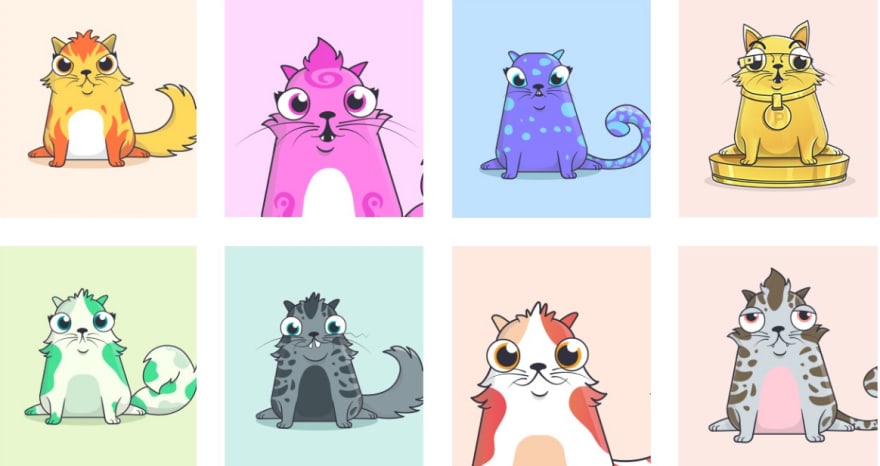This article was originally posted on Codica Blog.
On March 11, 2021, the collage of artworks by an American digital artist Beeple was sold at Christie’s for an unthinkable $69 million. It is by far the most expensive non-fungible token that has ever been purchased.
So what are non-fungible tokens? And what makes them so special that people eagerly spend tons of money on a unique digital item? In this article, we will try to answer all these questions.
The definition of the term “non-fungible token”
Basically, any unique digital asset linked to the blockchain can be classified as a non-fungible token.
On NFT marketplaces, these items fall under such categories as:
- Art;
- Domain names;
- Virtual world;
- Collectibles;
- Sports;
- Music;
- Memes.
Below you can see the list of features that indicate that we deal with NFTs.
- Tradability;
- Easy interaction with other ecosystems;
- Indivisibility;
- Authenticity;
- Liquidity;
- Scarcity;
- Programmability;
- Non-interoperability.
The most famous examples of non-fungible tokens
Game characters
When it comes to game characters as non-fungible tokens, we cannot but speak about CryptoKitties. This game appeared in 2017 as one of the first tries to use the blockchain for fun. The gamers get the chance to creed, collect, and purchase cure digital kittens.
Texts
Tweets fall under the category of text NFTs. Below, you can see the first tweet by Jack Dorsey, Twitter founder. By the way, a non-fungible token marketplace Valuable sold it recently for $2.9 mln.
Sport
Sport also stepped up in the NFT game. Here we should mention a line of digital collectibles launched by the NBA. The line was a big success and has already brought $400 million in trading.
Digital artworks
Finally, we could not disregard the most expensive non-fungible token, which is a collage of artworks created by digital artist Beeple. This digital asset called “Everydays - The first 5000 days” was sold at Christie’s for tremendous $69 million.
What is an NFT marketplace, and how does it work?
In simple terms, a non-fungible token marketplace is a platform where NFTs are stored and traded. Users can buy them for a fixed price or at an auction.
The relations between buyers and sellers on non-fungible marketplaces are regulated by smart contracts that are self-executed transaction protocols.
NFT marketplaces are divided into universal platforms and niche non-fungible marketplaces. The second type provides users with specific kinds of digital assets.
The most famous NFT websites are OpenSea, Rariables, and Foundation.
So how an NFT marketplace works, you may wonder. The schematic user flow provided below will make things easier for you.
Step 1. Users sign up on an NFT platform.
Step 2. They choose a preferred digital wallet.
Step 3. A non-fungible token is being created. To this end, users need to upload a digital asset.
Step 4. Digital items are listed for sale. Sellers can set a fixed price or choose a bid for an auction.
Step 5. Item moderation takes place.
Step 6. When new NFTs are approved, they are added to the list for sales.
Step 7. The token owner starts accepting bids.
Step 8. When the auction closes, they get a notification about top bids.
Step 9. The NFT marketplace handles the transfer of digital assets and funds.
How to build a non-fungible token marketplace?
When it comes to NFT marketplace development, the process is pretty similar to building any other marketplace. You need to define your potential users, required functionality, and the development approach.
1. Choose the basic features
When choosing the must-have functionality, we recommend that you start with the following features:
- Storefront;
- Advanced search function;
- Diverse filters;
- Listing creation;
- Listing status;
- Buying and auction functionality;
- Digital wallet integration;
- Ratings.
2. Select the suitable development approach
Based on your specific business requirements and budget, you can either use ready-made software or turn to a software development company.
The first option is cheaper, but you may be restricted by the functionality, provided out-of-the-box. A well-known example of ready-made tools is SDK offered by OpenSea.
The second solution is more costly. However, your NFT platform will be fully scalable, and there will not be any issues with adding new functionality.
Another benefit of a partnership with a software development company is the careful protection of sensitive information. It is crucial for non-fungible token marketplaces that should comply with security regulations.
Conclusion
These days the topic of non-fungible tokens stirs interest among collectors of unique digital assets. Given this popularity, it seems that it is high time to build an NFT marketplace platform to meet the demands of this specific audience. The launch of such a business promises wonders to early adopters.
For additional information about NFT marketplace development, check our full article: NFT Marketplace Development: What Is It and How Much Does It Cost?












Top comments (2)
great tips here.. thanks for sharing!
Thanks for your kind words